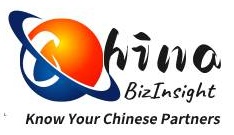For global investors assessing Hong Kong companies, the Annual Return (AR) filed with the Companies Registry is a critical compliance document. Under Hong Kong’s Companies Ordinance (Sections 662–664), this snapshot reveals real-time corporate health. Misinterpreting it risks overlooking compliance gaps or ownership surprises. Here’s how to decode it for due diligence.
Why the Annual Return Matters
Unlike financial statements, the AR captures structural changes within a company over the year:
- Share capital shifts
- Director/shareholder entries/exits
- Registered address updates
- Legal status (e.g., “dormant” vs. “active”)
All private Hong Kong companies must file within 42 days after their incorporation anniversary. Failure invites penalties (HK$870–$3,480) and reputational damage.
Key Pain Point: Investors often conflate ARs with financial reports. The AR is purely administrative—it won’t show revenue or debts but flags ownership or governance risks.
Critical Sections to Scrutinize
1. Capital Structure (Sec. 663)
- Authorized vs. Issued Capital: Sudden increases may signal fundraising; decreases could indicate buybacks.
- Share Transfers: Cross-reference dates against major contracts. Unexplained transfers might hide ownership dilution.
Example: A 30% share transfer 3 months before a loan agreement could imply creditor pressure.
2. Shareholders & Directors (Sec. 664)
- New Appointments: Scrutinize linked entities (e.g., a director joining from a competitor).
- Resignations: Mass exits often precede insolvency.
- Beneficial Owners: Since 2018, ARs disclose individuals controlling >25% of shares.
Red Flag: A shareholder’s address matching a dissolved BVI entity warrants deeper checks.
3. Registered Office Address
- Must be a physical Hong Kong location (PO Boxes are invalid).
- Frequent changes may suggest instability or “brass plate” operations.
4. Company Status: “Active” vs. “Dormant”
- Dormant Companies: File simplified ARs but cannot engage in business.
- Risk: “Dormant” entities acting as transaction conduits may breach compliance.
- Active Companies: Must disclose all structural changes.
Sample Annual Return Annotation
Source: Hong Kong Companies Registry
| Section | Field | Investor Insight |
|---|---|---|
| Capital | Issued Shares | ↑ From 10,000 to 50,000 (Feb 2023) → Possible new investor? |
| Directors | New Appointment | John Li (linked to 3 dissolved HK firms) → High-risk association |
| Registered Addr. | Change History | 3 changes in 18 months → Operational instability? |
Compliance Risks & Due Diligence Tactics
- Cross-Check Dates: Align AR filings with:
- Significant contracts (e.g., loans, M&A)
- Director resignations in public announcements.
- Monitor “Dormant” Entities: Validate zero activity via bank statements or supplier invoices.
- Spot Discrepancies:
- Example: AR lists 2 shareholders, but a loan agreement references 3 → Potential hidden stakeholder.
Case Study: In 2022, a Hong Kong trader’s AR showed no director changes. Later litigation revealed an undisclosed resignation—proving the AR was filed late.
Where to Access Annual Returns
- Hong Kong Companies Registry e-Search: Official portal (HK$22/page).
- Third-Party Reports: For annotated analysis + risk scoring, see our Hong Kong Company Report.
Key Takeaways for Investors
- ARs are compliance snapshots—not financial disclosures.
- Scrutinize shareholder/director changes for hidden risks.
- “Dormant” status ≠ inactive—verify with transaction trails.
- Cross-reference AR data with contracts and news.
Pro Tip: Pair AR analysis with a Business Registration Certificate check (validity, levy payments).
“In Hong Kong, the gap between an AR and reality can be a chasm. Verify, then trust.”
— Compliance Officer, HK Banking Group
Need to verify a Hong Kong entity?
Request a Certified Company Report with AR cross-analysis, regulatory flags, and director background checks.
